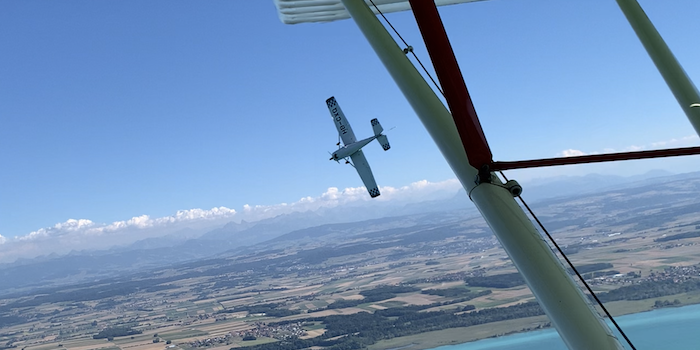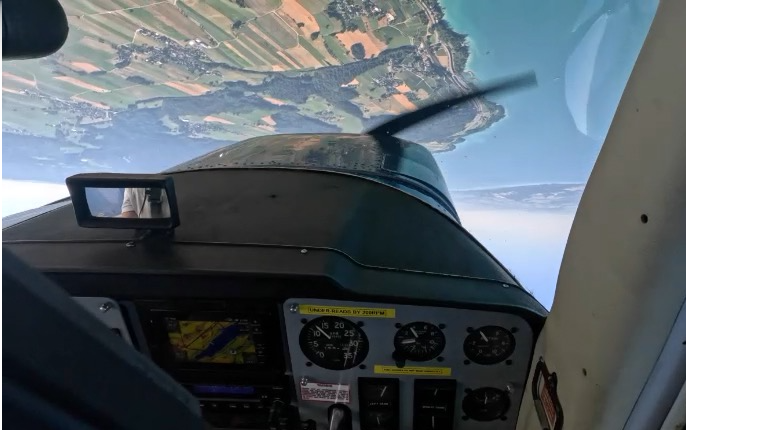
Loss of Control in Flight (LOC-I) and deteriorating handling…
The silent killer
On February 12th, 2009, at 22:16 LT, during the final approach to runway 23 at Buffalo Niagara International Airport, the Colgan Air Bombardier Q400 suddenly disappeared from the radar screen, resulting in the loss of 50 lives on board.
The subsequent investigation led by the NTSB revealed that the pilot’s response to the stall warning was improper, resulting in an unrecoverable stall.
The FAA and NTSB expressed concerns that the incident involving Colgan Air 3407 was not an isolated case and that similar deadly threats could occur in the near future.
A few years later, the world was once again shocked by two incidents resulting in hull loss: the A330 Air France 447 and the A320 Air Asia 8501, causing the deaths of 390 individuals. Both incidents shared similarities as the pilots responded poorly to a stall warning.
Several accidents, including those in Switzerland such as the Piper PA-46 D-EMDB, the Premier 1 D-IAYL at Samedan, the Junkers Ju-Air HB-HOT, and the Piper PA-28RT-201 G-BVDH on the Simplon Pass, have highlighted the seriousness of the issue.
Numerous similar incidents have garnered significant media attention and compelled regulators to establish a roadmap for addressing this escalating and unfamiliar threat: Aircraft Upsets followed by Loss of Control in Flight (LOC-I).
Indeed, over the past decades, Loss of Control in Flight (LOC-I) has been one of the leading causes of accidents and incidents in commercial, leisure, and general aviation. According to IATA, it represents the accident type with the lowest survivability ratio in the history of aviation. Recognising the gravity of the issue, the International Civil Aviation Organisation (ICAO) has included LOC-I as a top risk in their Global Aviation Safety Plan for the period 2020-2022. In the Swiss Aviation Safety Plan 2023-2025 and the Air Safety Report 2022, LOC-I and aircraft upset prevention have been identified as the highest priority areas. Understanding the causes, identifying warning signs, and implementing preventive measures are crucial in mitigating the potential for these fatal accidents. LOC-I remains a significant concern, posing risks to both pilots and passengers alike.
Thanks to the collaboration of various stakeholders, significant actions have already been taken to address the issue. For instance, the creation of the first ICAO manual, Doc 1011 “Manual on Aeroplane Upset Prevention and Recovery Training” in 2014, and the decision by EASA to mandate Advanced Upset Prevention and Recovery Training (AUPRT) prior to obtaining the first Multi-pilot Type Rating are just a few examples.
However, it is concerning that the newly established set of rules aimed at mitigating the threat of Loss of Control in Flight for Multi-Pilot operations did not include any initiatives for the general aviation sector. It is alarming to note that in this particular area, LOC-I consistently accounts for the highest number of victims and incidents.
Loss of control and upset definitions
LOC-I doesn’t happen without any signs or warnings but it is the dramatic evolution of another phenomenon called aircraft upset.
The definition of aircraft upset in the EASA GM3 FCL.010 states: “Aeroplane upset’ refers to an undesired aircraft state characterised by unintentional divergences from parameters normally experienced during operations. An aeroplane upset may involve pitch and/or bank angle divergences as well as inappropriate airspeeds for the conditions.”

Moreover any pitch exceeding +25º or -10º, any bank angle exceeding 45º or any improper speed for the phase of flight can be defined as aircraft upset.
When aircraft upset develop unnoticed or are poorly managed could progress in LOC-I with catastrophic consequences. LOC-I has been defined by the NASA as: “[…] significant, unintended departure of the aircraft from controlled flight, the operational flight envelope, or usual flight attitudes, including ground events. “Significant” implies an event that results in an accident or incident.” This definition excluded catastrophic explosions, CFIT, runway collisions, complete loss of thrust that did not involve loss of control, and any other accident scenarios in which the crew retained control. This does include loss of control due to aircraft design, aircraft malfunction, human performance, and other causes.“ Simply IATA defines the LOC-I as “[…] accidents in which the flight crew was unable to maintain control of the aircraft in flight, resulting in an unrecoverable deviation from the intended flight path.”
What can be done
Aircraft upsets and LOC-I can indeed be prevented, recognised, and recovered from. Prevention is the most vital aspect of addressing this issue.
It has been shown that solely increasing awareness through theoretical workshops is not sufficient in preventing these incidents. This is primarily because such workshops do not expose pilots to the psychological and physical effects of the stressful and startling events associated with upsets and LOC-I.
Regulators, safety agencies, and flight schools should maintain a high level of vigilance and promote practical training that focuses on effectively managing various aircraft upsets and LOC-I in a safe environment. Practical training is crucial in preparing pilots to handle these situations confidently and skillfully.
Pilots shall approach this problem with extreme respect and don’t underestimate the possibility that a developed upset or even worst a LOC-I could happen to them.
How to reach the objective
Training is widely considered the best line of defence against loss of control in flight (LOC-I) accidents and ‘aircraft upsets.’
With the experience gained from more than 50 practical courses given each year, several dozen hours per year devoted to seminars on the subject and simulations for airline pilots on Airbus 320s, I have been able to devise an approach developed in several stages:
Stage 1: Rising awareness
Comprehensive training programs educate pilots about the causes, symptoms, and warning signs of LOC-I and aircraft upsets. By raising awareness and providing the necessary knowledge, pilots are better equipped to recognise potential risks and take proactive measures to prevent them.
Stage 2: Prevention
Effective training emphasises the importance of preventive actions and risk management. Pilots learn strategies to maintain safe flight parameters, manage energy states, and make informed decisions to avoid situations that can lead to upsets. By focusing on prevention, training aims to eliminate or minimise the likelihood of LOC-I accidents.
Stage 3: Handling and Recovery Techniques
Training programs provide pilots with the skills and techniques needed to handle upsets and execute effective recovery procedures. This includes understanding aerodynamics, flight control systems, and utilising appropriate control inputs to regain and maintain control of the aircraft. By practicing these techniques in simulated scenarios, pilots gain confidence and proficiency in recovering from upsets.
Stage 4: Stress Management and Resilience
Training programs often incorporate stress management techniques and psychological factors that can affect pilot performance during high-stress situations. By addressing stressors and providing coping mechanisms, training helps pilots maintain a calm and focused mindset, enabling them to effectively respond to upsets without succumbing to panic or undue stress.
In summary, training acts as the best line of defence against LOC-I accidents and aircraft upsets by raising awareness, promoting prevention, teaching proper handling and recovery techniques, and managing stress. By investing in robust training programs, aviation stakeholders can significantly reduce the risks associated with LOC-I accidents, ultimately ensuring safer skies for all.
Restrictions
A sound training program must include instructors with proven expertise and suitable aircrafts capable for aerobatic but maintaining all the characteristics of normal or utility aeroplanes. It has to be noted that initial training remains vital but its effectiveness fades quickly and must be rehearsed with timed recurrent.
Conclusions
Aircraft upsets and LOC-I together represents the highest risk for aviation at any level. It hits pilot with any experience and regardless the operations and the type of aircraft flown. If in one hand a positive initiative has been taken thanks to the EASA Advanced Upset Prevention and Recovery Training, it must be highlighted that this important tool is mandatory only for the first multi-pilot type rating and for recurrent training in commercial airline transport area. General aviation and leisure pilots have not benefit from these corrective actions leaving to the individuals the responsibility to access specific training and improve their skills.
The skies belong to all pilots, and all pilots should benefit from the same tools to make their flights safer.